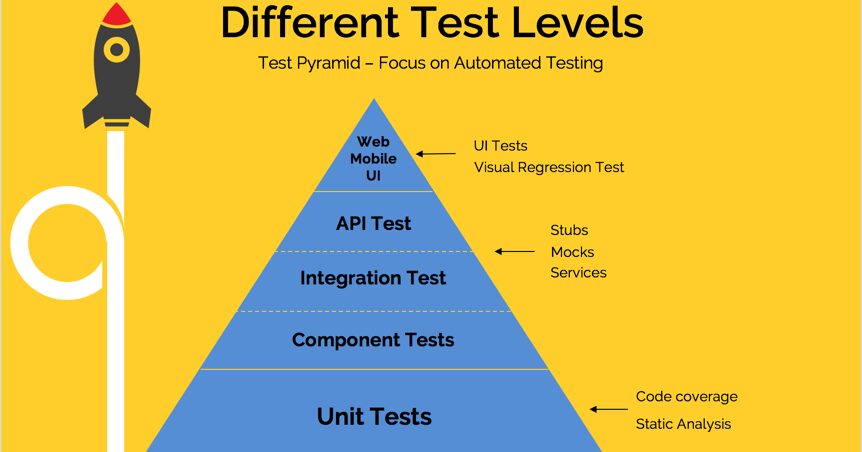
Automation Testing with Java: Common Challenges and How to Overcome Them
Automation testing has become an indispensable element of software development. Java has gained popularity as a language for implementing automation frameworks. Nevertheless, like any testing endeavour, automation testing with Java presents its distinct set of challenges. This blog aims to examine the typical challenges encountered during automation testing with Java and propose effective strategies to overcome them.
One of the foremost challenges encountered in automation testing is to ensure the continuous maintenance of test scripts as the application evolves. The frequent updates and alterations can render the test scripts vulnerable and necessitate perpetual upkeep. Another significant obstacle is managing dynamic elements on web pages, which can trigger script failures due to difficulties in identifying said elements. Furthermore, effectively managing test data, handling exceptions, and integrating automation with continuous integration systems can present hurdles in the automation testing process.
Fortunately, there exist established methods to tackle such impediments. Adhering to the modular design, implementing the Page Object Model (POM) design pattern, employing data-driven testing, and allocating resources for effective error handling and environment setup are exemplary best practices. Adopting these approaches enables testers to overcome these hurdles and establish a robust automation testing framework.
The blog will delve into each challenge in detail, exploring the strategies and techniques to mitigate them. By gaining insights into these common challenges and their solutions, testers can enhance their automation testing proficiency and ensure efficient and effective software testing with Java.
What is Automation Testing with Java?
The practice of automating software testing tasks using Java programming language and its associated tools and frameworks are known as Automation Testing with Java. The process involves the creation of automated test scripts through coding to emulate user actions, validate software functionalities, and identify flaws or regressions within an application.
In the realm of automation testing, Java is a widely employed programming language owing to its adaptability, platform neutrality, and vast libraries and frameworks available for testing objectives. Java provides an array of tools and frameworks, including Selenium WebDriver, TestNG, JUnit, and Cucumber, which empower testers to generate sturdy and effective automation scripts.

Common Challenges in Automation Testing with Java
The advantages of automation testing, ranging from heightened efficiency to cost-effectiveness, are indisputable. Nevertheless, Java-based automation tools may pose several challenges for software testers.
Here are a few common challenges in automation testing with Java:
-
Choosing the Right Framework
Choosing the appropriate automation testing framework in Java can be a challenge. It requires meticulous consideration of aspects such as project requirements, team expertise, and compatibility with other tools. Each framework, such as JUnit, TestNG, or Selenium, has its features and benefits. Evaluating these frameworks based on their test organization, execution capabilities, reporting, and extensibility is paramount to making an informed decision.
One of the commonly used cloud-based platforms is LambdaTest. It is a cross-browser testing platform that helps to execute Java automation tests on an online browser farm of browsers and operating systems. When you use LambdaTest, it is easy to access scalable cloud infrastructure which can manage the automation testing needs. Instantly test your Java automation scripts in real time on real browsers and devices.
One of the most used features of LambdaTest is that it integrates with Java testing frameworks like TestNG and JUnit. With this, it is easy to import your test suites and run them on LambdaTest without any challenges.
-
Test Environment Setup
Setting up the test environment is a complex task, especially when you are haggling with multiple dependencies, configurations, and external systems. In this case, it is crucial to ensure that the test environment is appropriately configured and consistent across different testing stages, such as development, testing, staging, and production.
Challenges may arise when configuring software, hardware, network components, databases, or external services. Proper documentation and automated scripts can help streamline the setup process and minimize errors.

-
Test Data Management
Automation tests usually demand a variety of test data to cover different scenarios. Handling the test data is a challenging task. This is especially true when managing large datasets or complex data dependencies. The test data ought to be accurate, consistent, and effortlessly accessible.
When dealing with sensitive data, it is vital to handle data privacy and security concerns appropriately. Test data management techniques such as data-driven testing, data generation, and data masking can help to address these challenges properly.
-
Synchronization and Timing Issues
Automation tests interact with the application under test (AUT) in real-time, and timing issues can occur. Synchronization problems between test execution and AUT response can lead to test failures or unreliable results. For example, a test may fail if it tries to interact with an element that is not yet visible on the screen.
Employing synchronization techniques, such as explicit waits, implicit waits, or polling mechanisms, is vital to handle such challenges. Proper timing and synchronization ensure that the tests interact with the AUT effectively and produce accurate results.
-
Element Locators and Maintenance
Identifying and locating elements on a web page or application is paramount for automation testing. Nonetheless, dynamic UI changes, complex page structures, or inconsistent element locators can make it tricky and complicated to write vigorous and maintainable tests. Modifications in the UI, such as altered or added elements, can induce test failures if the locators are not updated accordingly.
Regular maintenance and updates to locators are crucial to keep the tests running steadily. Techniques such as utilizing unique identifiers, CSS selectors, or XPath expressions can help enhance the robustness of element locators.

-
Test Script Scalability
As the software system expands, automation testing must exhibit scalability to adapt to new functionalities and modifications. Upholding a modular and adaptable test script architecture is crucial to mitigate the time and resources needed for updating test scripts and decrease the influence of alterations on pre-existing tests.
Reusability, parameterization, and separating test data from test logic can help improve scalability. Ensuring that test scripts are organized and designed with future changes in mind can save time and effort in the long run.
-
Test Execution Performance
The execution of automation tests should be swift and provide prompt feedback. Prolonged and sluggish test execution can impede the development process and postpone issue detection. The optimization of test execution performance is crucial in order to ensure the efficient allocation of resources and to provide the development team with expedited feedback.
Techniques such as parallel test execution, efficient resource allocation, optimized test configurations, and minimization of unnecessary waiting periods or delays can enhance test execution performance.
-
Reporting and Result Analysis
Generating significant reports and analyzing test outcomes is imperative for monitoring test coverage, identifying defects, and supervising overall test efficiency. Establishing appropriate reporting mechanisms and integrating them with test frameworks can be complex, particularly when encountering intricate test scenarios or distributed test environments.
-
Test Maintenance and Stability
As the application modifies over time, automation tests require regular maintenance to remain relevant and accurate. Test scripts should be updated and adjusted to accommodate new features, bug fixes, and changes in the AUT. Ensuring test stability and reducing false positives/negatives is an ongoing challenge in automation testing.

Way to Overcome Challenges in Automation Testing with Java
To overcome challenges in automation testing with Java, consider the following strategies:
Define a Clear Automation Strategy: Initiate the process by drafting a well-defined automation strategy that is in sync with your testing pursuits. Determine the scope of automation, prioritize test cases, and specify approaches for developing dependable and maintainable test scripts.
Choose the Right Automation Framework: Selecting an appropriate automation framework can enormously facilitate the testing process. Frameworks such as Selenium, Appium, or Cucumber deliver robust tools and libraries for creating and executing tests in Java. That is why it is vital to assess different frameworks based on the requirements of your project and prefer the one that best fits your needs.
Design Effective Test Cases: Well-designed test cases are crucial for successful automation testing. Prioritize writing test cases that cover critical functionalities and edge cases. Ensure that your test cases are independent, maintainable, and reusable.
Implement a Modular Approach: Break down your test cases into more diminutive modular units to enhance maintenance, reusability, and scalability. Employ functions, methods, and classes to encapsulate shared functionalities and minimize code redundancy.
Utilize Page Object Model (POM) Pattern: POM is the most used design pattern where you can easily maintain and reuse automated test scripts. It helps you to implement a class for each web page or component and include the page elements with related functions within that class.
Implementing Robust Error Handling: When automating tests, it is crucial to effectively handle errors and exceptions. Incorporate appropriate error-handling mechanisms, such as try-catch blocks, to gracefully capture and manage exceptions. Ensure that meaningful error messages and logging are included to assist in debugging and troubleshooting.
Utilize Data-Driven Testing: Data-driven testing allows the execution of test cases with different sets of input data. This approach enhances test coverage and helps identify defects specific to various data scenarios. Incorporate frameworks like TestNG or JUnit to enable data-driven testing capabilities within your automation suite.
Conduct Regular Code Reviews: Regularly perform code reviews to validate code quality, adherence to coding standards, and the adoption of optimal coding practices. Collaborative reviews among team members can help identify potential concerns, enhance code sustainability, and promote knowledge sharing within the team.
Continuous Integration and Continuous Testing: Incorporate your automation suite with a continuous integration (CI) framework, such as Jenkins, Bamboo, or GitLab CI/CD. This facilitates the automatic execution of tests whenever any code modifications are done, guaranteeing timely identification of defects. The adoption of continuous testing methodologies assists in the prompt discovery of problems and sustains a substantial level of test coverage.
Invest in Training and Skill Development: Automation testing technologies and best practices evolve rapidly. Invest in training and skill development for your team members to stay updated with the latest tools, frameworks, and methodologies. Encourage knowledge sharing within the team to foster continuous improvement.

Conclusion
When you use Java for automation testing provides several advantages, such as quicker testing cycles and more dependable outcomes. Nevertheless, this approach can also include various challenges, such as addressing dynamic web elements, managing test data, and preserving test scripts.
Developers and testers can overcome these challenges and secure tests in their automation testing initiatives by adopting the best practices and strategies outlined in this post. Also, with the appropriate tools, techniques, and mindset, automation testing with Java can considerably enhance the quality and efficiency of software development procedures.